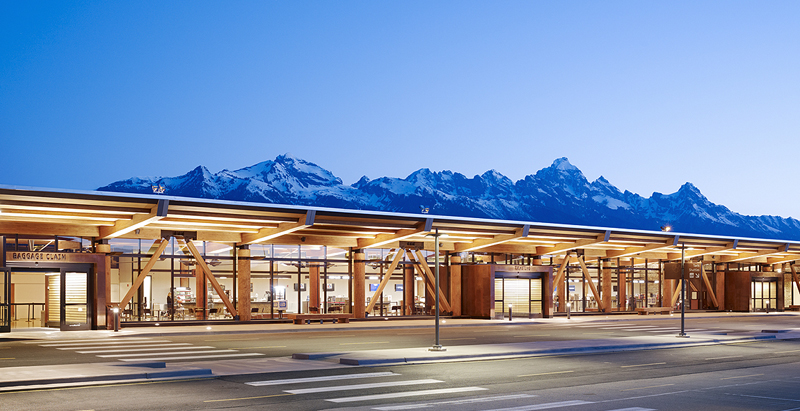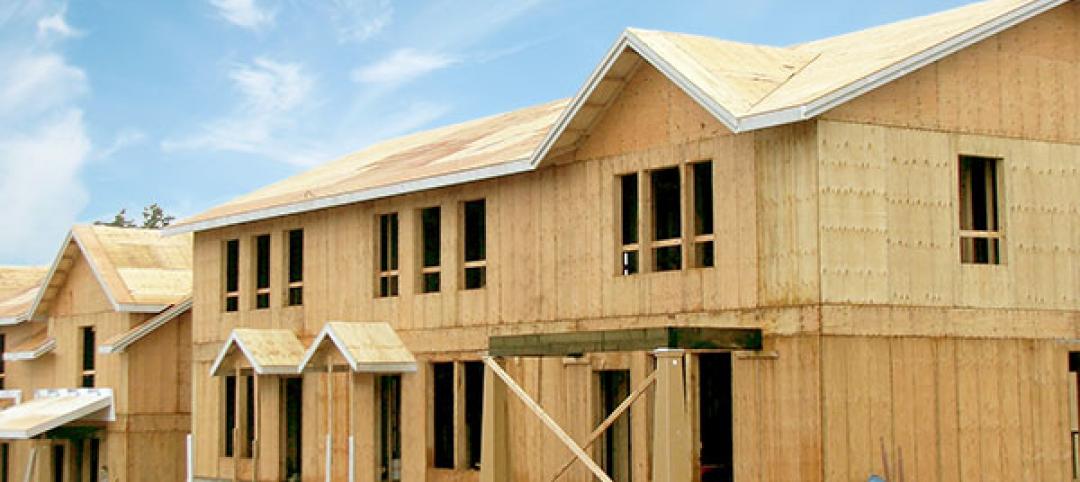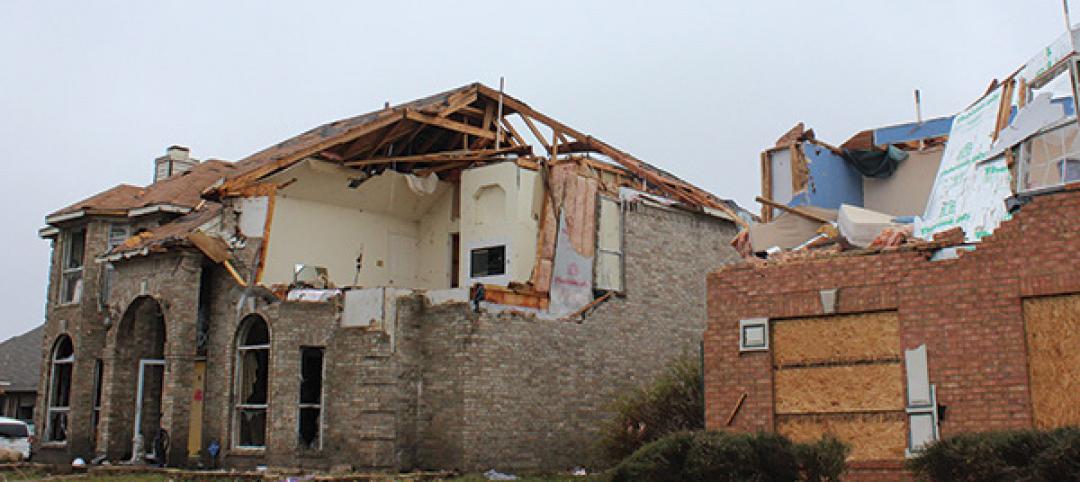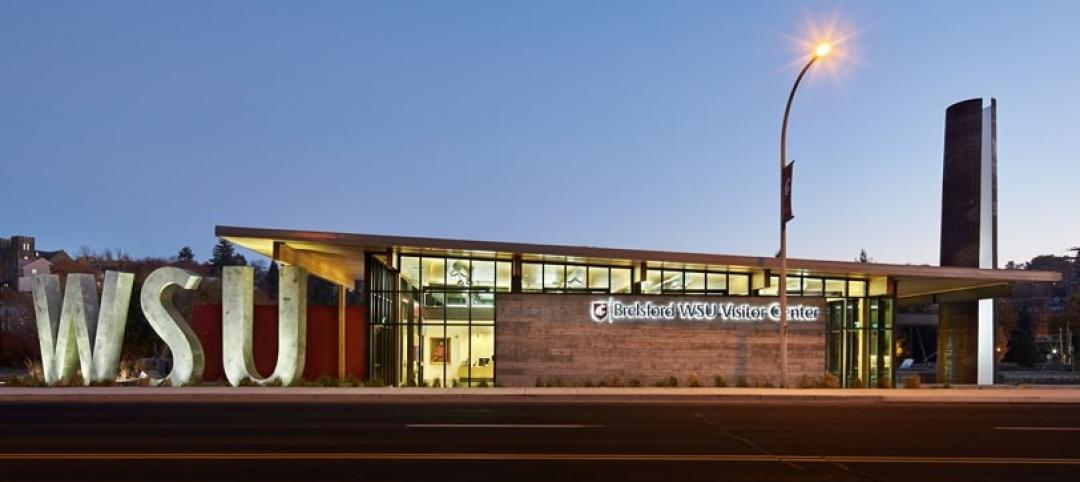Standing just 18 feet tall at the base of the spectacular Teton Range, the Jackson Hole Airport makes a quiet complement to the mountains majesty behind it. Unlike other airports, this one was designed as a foreground piece rather than as a stand-alone sensation, created with materials borrowed from nature so as not to steal any attention from the snow-capped main attraction that rises above it.
A three-phase expansion and renovation, which began in 2009, nearly doubled the size of the aviation hub—the only one located in a national park—to approximately 116,000 square feet.
From the outset, the team was determined to stay true to western Wyoming traditions and mountain-town architecture—while simultaneously obliging the 18-foot height restriction imposed by the park. Architect Brent Mather, a design director at Gensler, says the designers achieved that harmony through their choice of natural materials, exposed glulam trusses and purlins, and expansive panes of glass.
Welcome to Wyoming
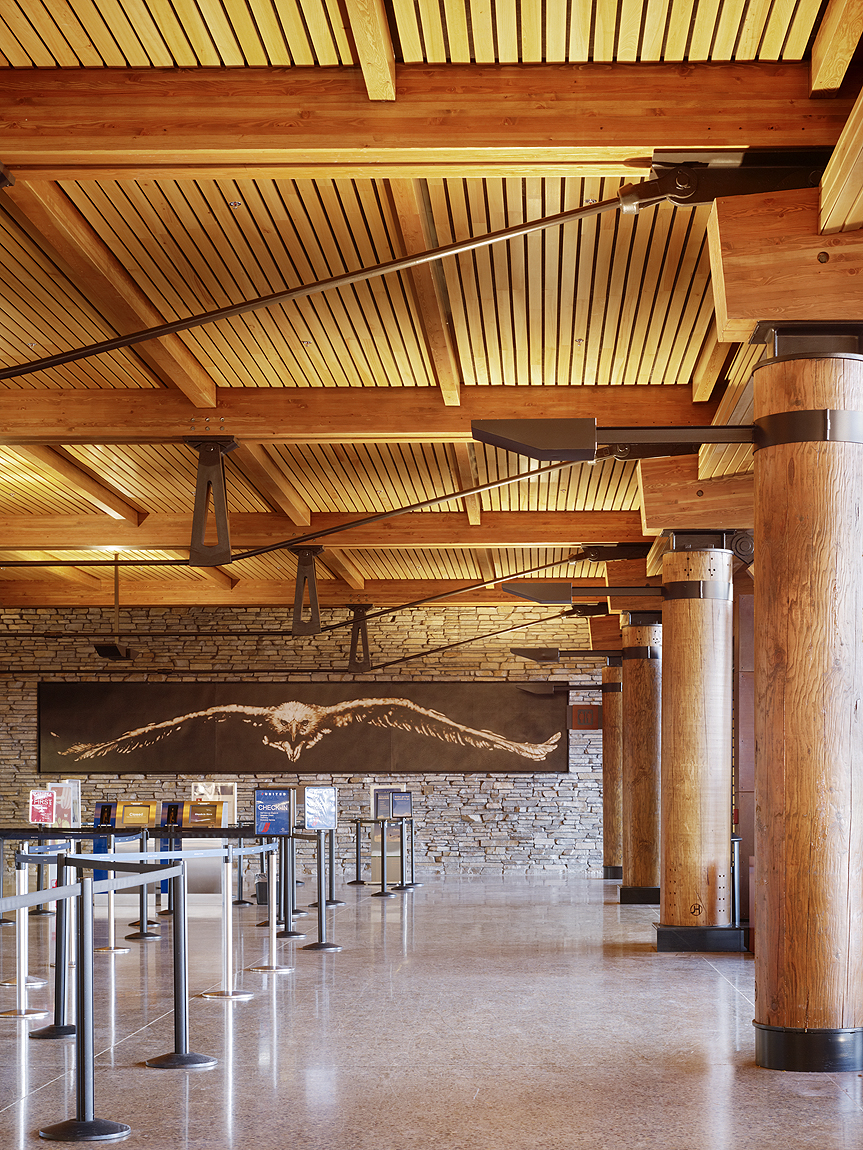
Greeting airport travelers are glulam queen post trusses that support a 19-foot overhang covering a wide sidewalk from the front of the building to the curb. The trusses, supplied by QB Corp. and fabricated by Western Woodwright, were fastened with rods and clevises to the façade’s Douglas fir columns and main glulam beams, allowing for shallower columns that conform easily with the height restrictions. That created what Mather calls a “more delicate” look. “It gave [the front of the building] the appearance of a hand-crafted, expressive structure.”
Nearby are a few custom-built wood coffee tables, integrated into steel bases and mounted to the curb under the overhang. To make the tables, the team repurposed old glulam beams from parts of the airport that were demolished during the renovation.
“The structure celebrates modern mountain architecture,” says Mather. “Wood is the perfect material to do that because of its warmth.”
Indoors, premium-appearance glulam was used to fabricate beams and purlins that coordinate with solid-sawn 24-inch-diameter Douglas fir columns, an exposed, tongue-and-groove ash wood ceiling, and steel brackets in the predominantly wood airport lobby and ticketing area.
The quality and appearance of the glulam, which was stained and fabricated in the shop rather than on the jobsite, were of particular concern on this project, notes Von Behunin of National Building Systems, which sourced materials for the project. “They don’t have knots in them or putty,” he says. “It’s the nicest finish that APA recognizes.”
The 14 glulam trusses, measuring 8-3/4 inches by 33 inches and up to 55 feet long, provided the long spans the designers desired so that fewer columns would obstruct the panoramic view of the mountains through clear curtain walls.
The final phase of construction, which was completed in January 2015, included installation of trusses measuring as long as 85 feet. To accommodate the long spans, the builders specified a balanced layup with high-grade, tension-lam (24F-V8) material. “I can’t imagine a job like this being done with anything but glulam,” says Ron Shamblin, president of Western Woodwright.
But strength isn’t the only thing that sold architects on glulam, notes Mather. “We considered a steel structure and we considered a concrete structure,” he recalls. “But none of those really made sense. They can be quite nice, but they perhaps aren’t suggestive of the regional aesthetic.”
Hidden Treasures
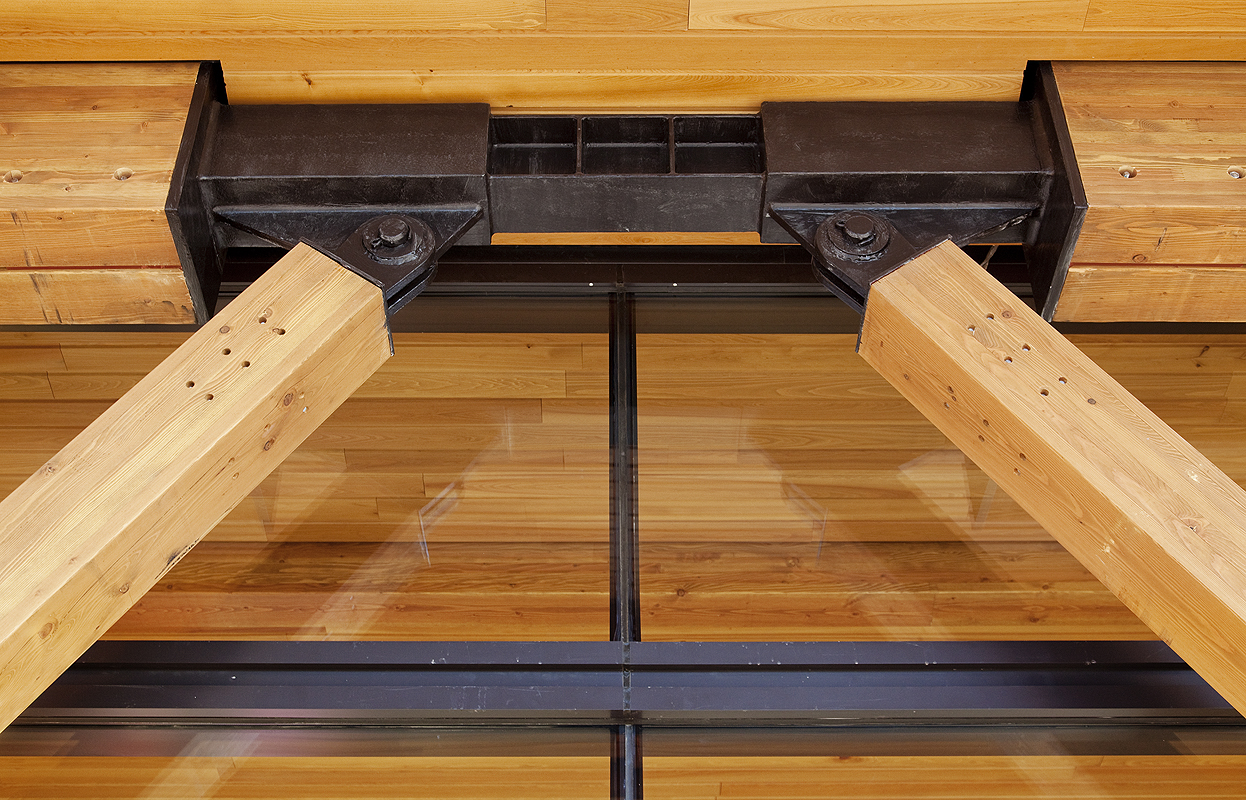
The fasteners that connect the building’s trusses to beams and columns had to be sturdy enough to withstand an earthquake, as the base of the Teton Range sits on a 35-mile fault line.
Still, Mather says the designers wanted to “celebrate each connection” with steel fasteners “that were taken to the next level to be artful,” as well as functional.
Elsewhere, most of the connections are hidden. Builders used K-bracing across the front of the building to reduce the lateral load on the structure. They kerf-cut the ends of the glulam beams so they could insert concealed steel brackets, which continue up over the top of the trusses and connect them to the purlins.
“We use hidden connections all the time, but these were different,” notes Behunin. “We actually cut a horizontal slot and slipped the hanger into the end of the beam so you can’t even see it.” It’s a clean look that reveals 3/4-inch pieces of black steel on the sides of the purlin and truss beams.
In addition, the project included a number of German-made Bertsche System (BS) connectors to join steel and wood elements. The BS connectors transfer tension and compression forces from the glulam beam to the steel part and fit into drill holes that are the same diameter as the pin.
“You can’t see them; you can only see the holes,” says Shamblin. “It’s a very sophisticated means of making a strong connection between timbers and steel components.”
Also out of view: sustainability features—a nod to the locals’ respect for their mountain environment—including Forest Stewardship Council-certified timber; low-emitting adhesives, paint and carpeting; and low-flow toilets and sinks, which will help the building earn a LEED Silver certification.
The renovated facility is already gaining fans, including a mention on Fodor’s list of the world’s most stylish airports and a 2015 Wood Design Award. It also earned an AIA 2014 Institute Honor Award for Architecture; judges called the design “modestly elegant and elegantly modest,” saying it “embraces the culture of the area in every way.”
To read more case studies on commercial projects featuring engineered wood structural framing, become a member of APA Designers Circle at www.apawood.org/designerscircle. A free online community for architects, engineers, and other members of the commercial building industry, Designers Circle provides timely information, technical resources, continuing education, and recommendations for innovative wood-frame construction.
More from Author
Mark Halverson | Oct 26, 2016
Compelling conversations about wood: East and West Coast regional challenges
Fast-rising designers Ben Kasdan and Blake Jackson offer candid perspectives from both coasts on the merits—and challenges—of designing with wood and compare notes on how architects can change perceptions by dreaming big and pushing boundaries.
Mark Halverson | Oct 13, 2016
Engineered wood provides sustainable options, cost savings, and design flexibility
Designers choose engineered wood to deliver strength, stability, and a sustainable solution for complex structural designs
Mark Halverson | Jul 21, 2016
Economical, energy-efficient roof assemblies
Not all roof and ceiling assemblies are created equal, especially when it comes to energy performance.
Mark Halverson | Jul 5, 2016
Takeaways from 2015 Texas tornadoes: Construction details make a difference
Stronger building components combined with more intentionally constructed connections can mean the difference between buildings that withstand tornadoes and those that don’t.
Mark Halverson | Nov 20, 2015
Schooling the visitor
Exposed glulam and other engineered wood products help WSU tell its technology story
Mark Halverson | Aug 25, 2015
Engineered wood helps meet booming demand for multifamily projects
Multifamily housing starts reached 358,000 in 2014, a 16 percent increase over 2013 and the highest total since 2007
Mark Halverson | Jul 29, 2015
Glulam provides aesthetic, structural, and safety solution for Appleton Mills project
The Appleton Mills complex includes 5 million square feet of space, with an original structure built in the 1870s and another building added in 1906
Mark Halverson | Jun 30, 2015
Which Is More Efficient: Wood Walls or Steel and Masonry With Continuous Insulation?
By nature, wood has nearly four times the thermal resistance of steel or masonry
Mark Halverson | Jan 2, 2015
Case studies: Engineered wood brings cost savings and design flexibility across commercial project types
For commercial architects facing increasing pressure to design innovative structures while simultaneously cutting costs and accommodating tight deadlines, engineered wood systems are providing a welcome solution. With the abilities to span long distances and support increasingly greater heights, engineered wood and wood structural panels deliver performance and versatility alongside familiarity, availability and affordability. SPONSOR CONTENT

